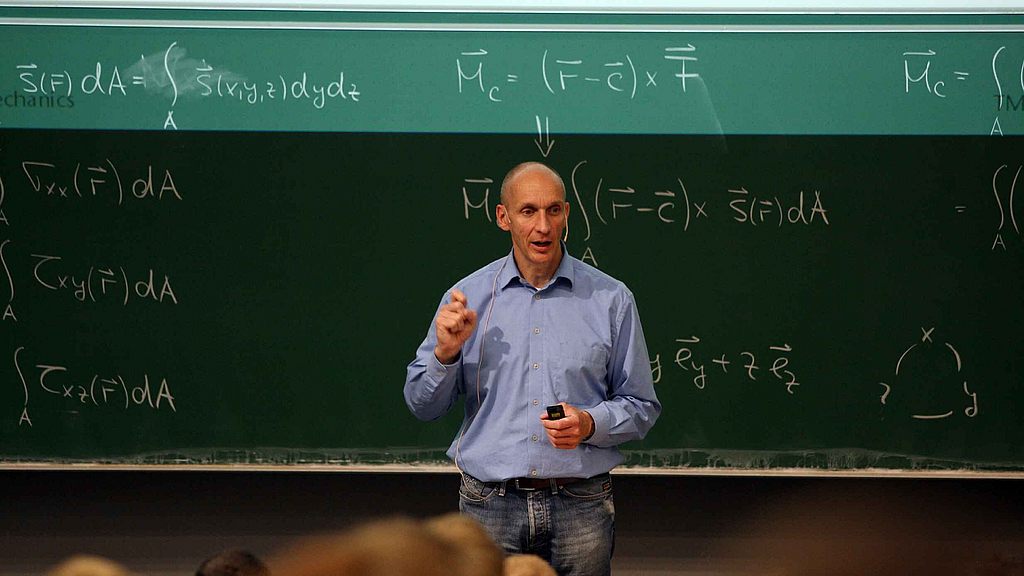Finite Element method
Very fast one recognizes in the course Engineering Mechanics II (Strength of Materials) that the number of problems, where analytical equations can be derived, are limited. Arbitrary two- and three-dimensional stress- and strain states are not treatable by the developed approximations within certain accuracies. The goal of this lecture on finite elements is the numerical treatment of structures, where the structure is assumed to behave elastically. Since the finite element method is the most popular numerical method within engineering applications, this lecture should be heard by most of upcoming engineers. The goal of this lecture is not to learn a particular finite element program (this is provided in every company which prefers a particular software product), but to understand the background of such programs. The exercises have the focus to develop an own small finite element program, where all basic problems are touched.
On the basis of the previsions Content it is the aim of the lecture to incorporate material nonlinearities into finite elements. Modern applications are not restricted to elastic systems anymore. First, constitutive models of viscoelasticity, elastoplasticity and viscoplasticity are motivated to achieve the knowledge about the basic mathematical structure of these model equations. Moreover, their physical applicability is studied. On this knowledge, the discretization within finite elements and the implementation of such models is discussed. This leads to the task of solving large systems of differential-algebraic equations, which is done using particular time-integration methods and necessary algorithms to solve systems of non-linear equations.
| Periods per week | 2 lectures + 1 exercises |
| Final exam | Homework and oral exam |
| Content | Equilibrium, kinematics and three-dimensional Solid mechanics Material models of viscoelasticity, viscoplasticity and elastoplasticity |
| Language | German |
